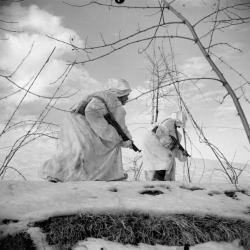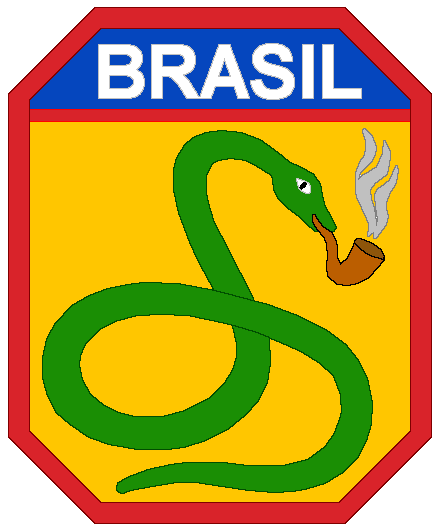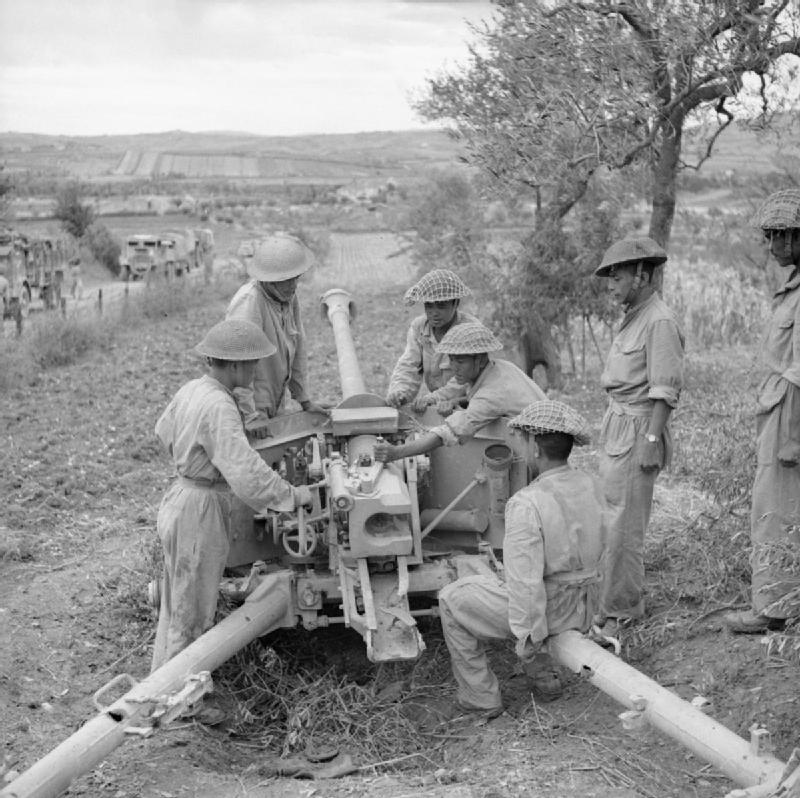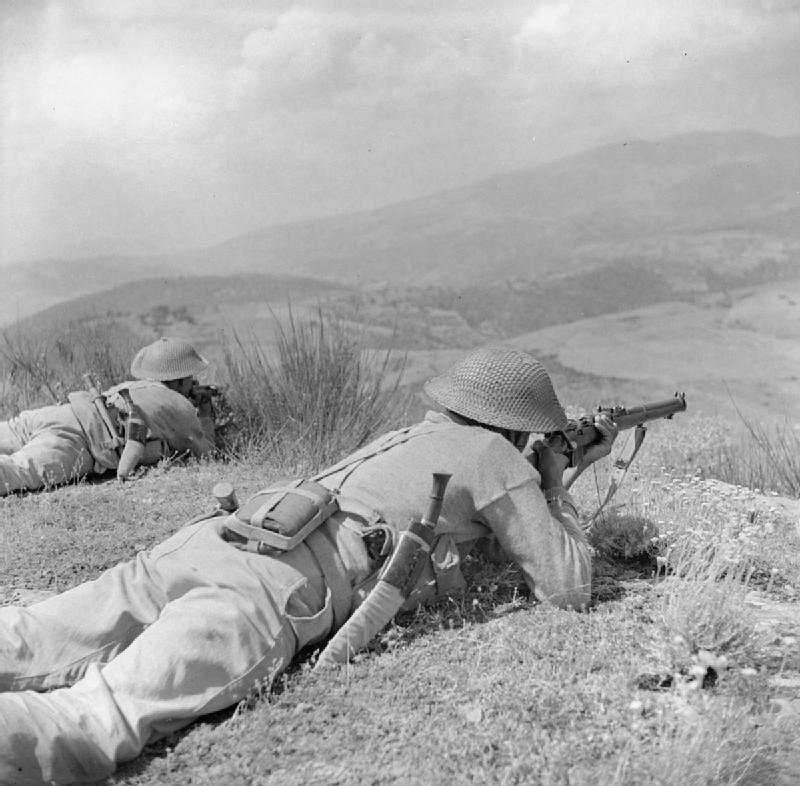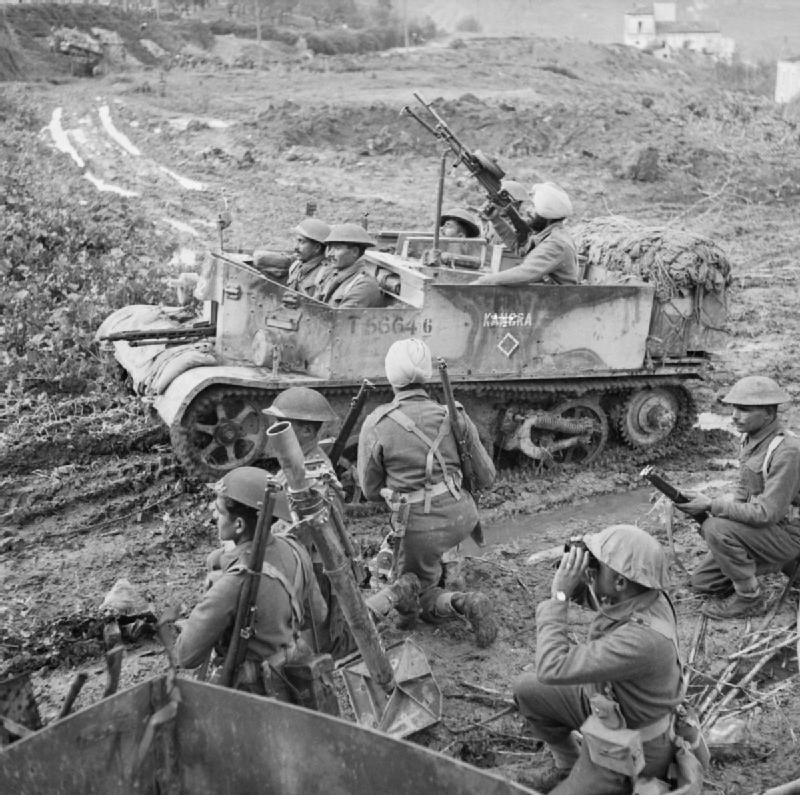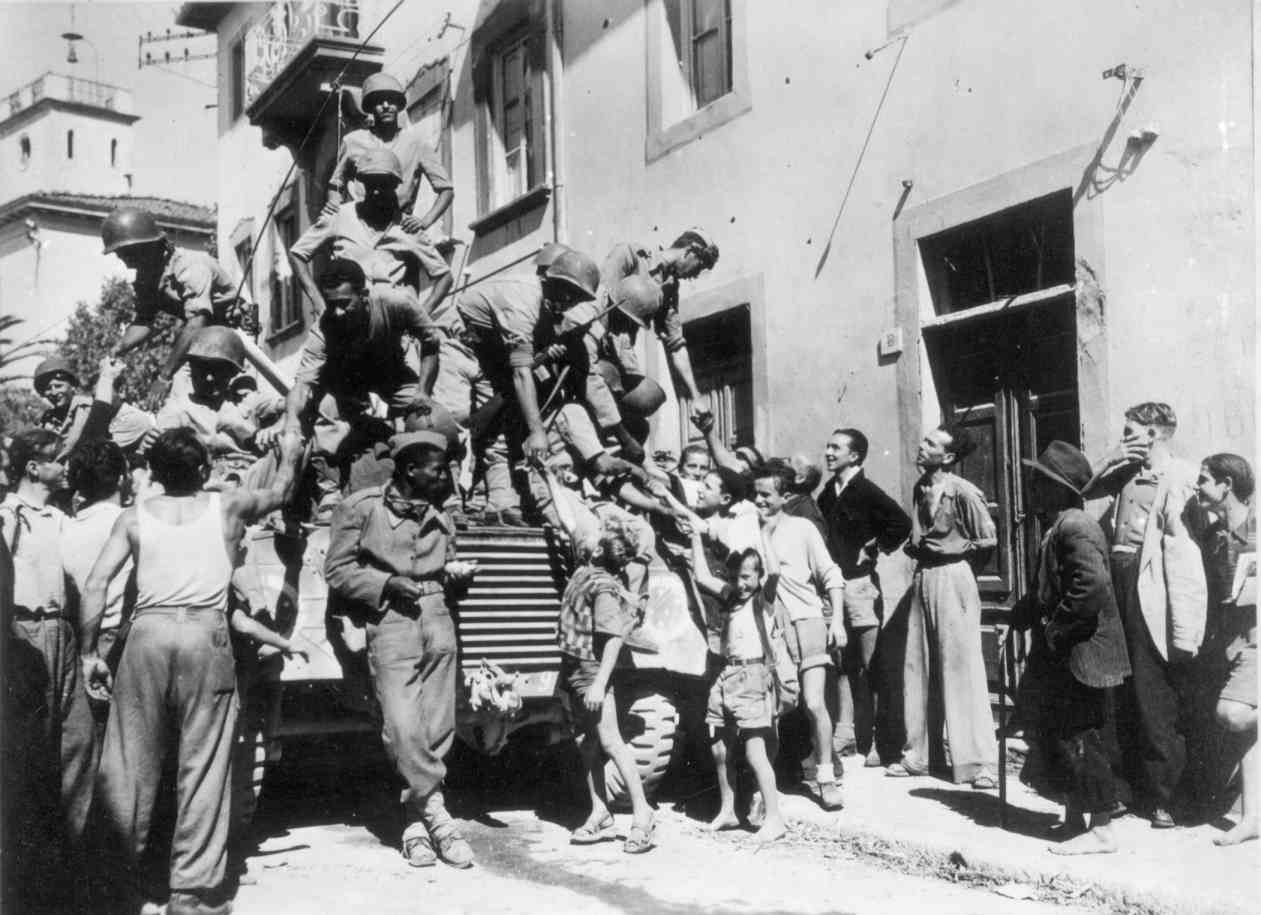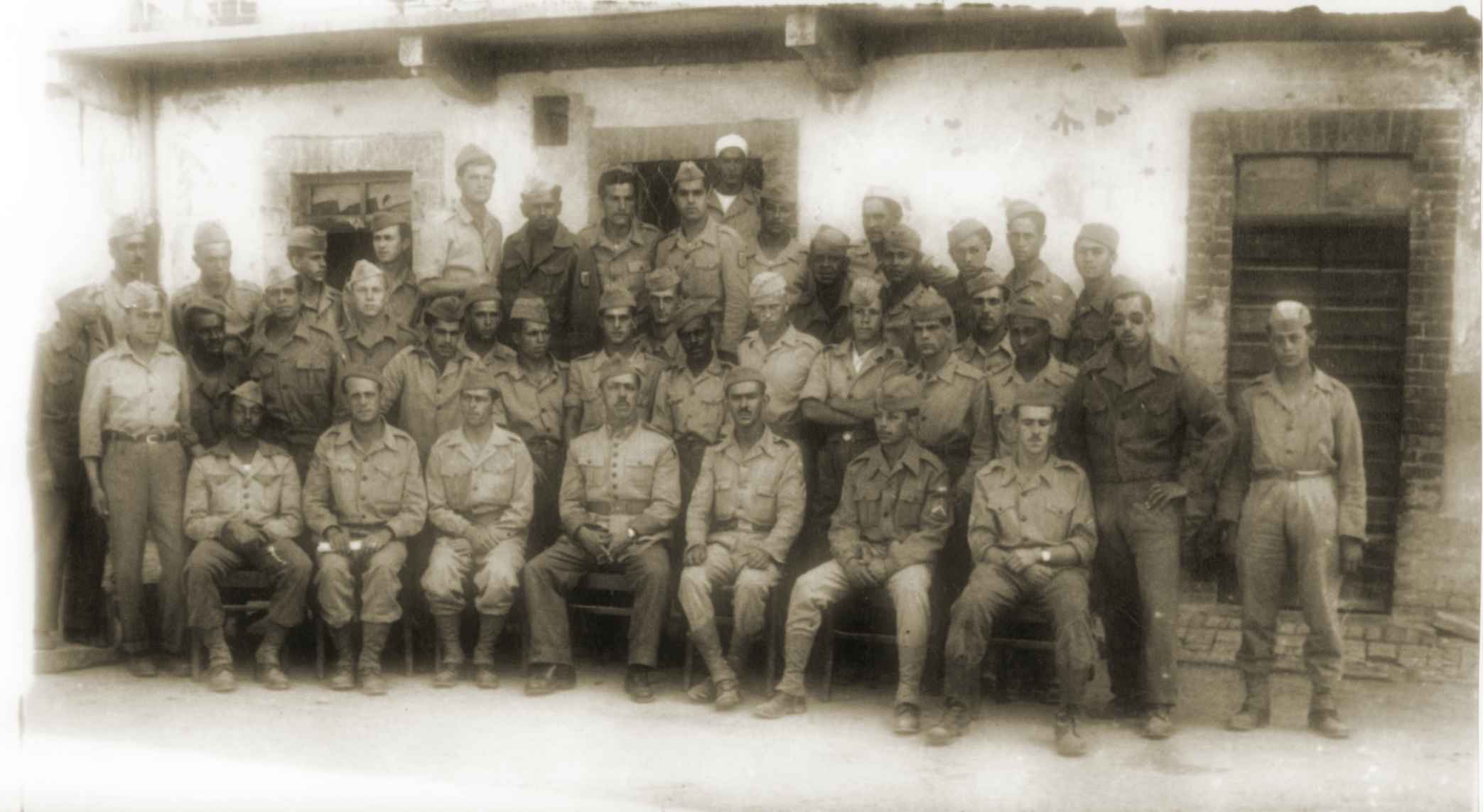This article was published as part of our exhibition on the Italian Campaign: Through Vines and Mines.
Visit our exhibition to learn more about the history of the Canadian soldiers and nurses sent to Italy!
After a successful operation in Sicily from June to August 1943, the Italian campaign got underway in September 1943, when the Allied armies landed on the southern coast of the peninsula and came face to face with German forces. The campaign was a long one, mobilizing an incredible number of soldiers to dislodge the enemy defenders. In fact, for many months until the end of the war in August 1945, elements of the Brazilian, French, Indian and Polish armies participated alongside the Americans, British and Canadians.
During operations, the Allies are divided into two separate armies: an American army and a British army. Attached to these, the Foreign Corps joined the operations and received their orders from the American and British commanders. These included the Brazilian Expeditionary Force, which joined the American army, and the Polish Armed Forces in the West, which accompanied the British. The British also mobilized several colonial troops from the Middle East and British India, who had accompanied them since the North African campaign (June 1940 to May 1943). Finally, it is also important to include the participation of the French Expeditionary Corps during the campaign, which included several soldiers from the North African colonies.
In this first part of a two-part series on the participation of foreign forces in the Italian Campaign (1943-1945), we focus on two non-European nations: the British Indian Army and the Brazilian Expeditionary Force. Coming from two different continents, working in two different armies and with equally contrasting motivations, the two forces have at least one thing in common: they fought relentlessly against Nazi and Fascist forces in Italy. From the start of the invasion to the end of the conflict, the Indians and Brazilians were important pillars of the Allied strategy to liberate the Italian peninsula.
The British Indian Army
The Indian Army was certainly a major force throughout the Second World War. Acting as part of the British Army, several divisions were first deployed in Africa and the Middle East, before being transferred to Italy. Unlike the majority of American and Canadian troops deployed on the peninsula, Indian troops were often experienced combatants, already veterans of several campaigns. For example, the 4th Indian Infantry Division, nicknamed the “Red Eagle” division, was active at the front as early as 1940, with operations in Libya, Egypt, Sudan and Eritrea, before being sent to Syria and Lebanon.
The first Indian soldiers landed in Italy on September 24, 1943. The soldiers of the 8th Infantry Division took part in the breakthrough in the east of the peninsula. For almost two years, Indian soldiers advanced continuously through enemy territory, crossing rivers and mountains to liberate the territory. In many of these operations, Indian troops worked in conjunction with Canadian soldiers. As it advanced towards the Gothic Line, the 8th Division was frequently covered by the tank fire of the 1st Canadian Armoured Brigade, for example. On another case, the 10th Indian Infantry Division, who arrived in Italy on March 9, 1944, was tasked with relieving Canadian troops in the Ortona region.
Several elements of the Indian army also took part in the famous battle of Monte Cassino – which saw the liberation of Rome by the Allies. Begun in January 1944, this was a particularly long battle. As a matter of fact, the 4th Indian Infantry Division was mobilized in February 1944 to relieve the first wave of the assault. For several months, several Indian units assaulted German positions, suffering heavy losses in the process. In the end, Indian forces fought at Monte Cassino until its conclusion.
The Brazilian Expeditionary Force
It’s unfortunate that, despite its important contribution in Italy, Brazil’s participation as an Allied nation is frequently forgotten. It wasn’t until August 1942 that the Brazilian government declared war on the Axis. At that point, the United States attempted to bring the Latin American nations under its umbrella, so as to limit the influence of Germany and its allies on the continent – particularly in terms of transport and trade. In response, the German and Italian navies attacked Brazilian ships, sinking 36 of them and causing almost 2,000 casualties! In fact, in the early years, Brazil’s involvement was mainly at sea, escorting Allied commercial vessels and attacking enemy submarines close to their waters.
Apart from the navy, the Italian campaign was the most important operation for Brazil. The Brazilian Expeditionary Force arrived on the peninsula on July 16, 1944. In all, Brazilian troops accounted for some 26,000 additional troops at the front. This was a substantial addition to a campaign that was still underway, and which saw many of its troops relocated elsewhere. Indeed, their arrival meant that several elements of the American army (including the 1st Special Service Detachment) could be transferred elsewhere in Europe.
Under the command of the U.S. Army, the Expeditionary Force fought several successful battles along the west coast and in the northern region of the peninsula. After more than 10 consecutive months of fighting, the last major engagement for the Brazilians was the Battle of Collecchio, fought from April 26 to 29, 1945. At this point in the war, the German army was almost routed, and the town of Collecchio was an opportunity for them to regroup and lead a counter-offensive against the Allies. The Allies surrounded the town, but the Brazilian soldiers soon succeeded in capturing the church and using it as an observation post. In the days that followed, German soldiers made strenuous attempts to dislodge the Brazilians, but each attack was thwarted. Finally, faced with the impossibility of retaliating properly and the imminent fall of the Nazi regime, the German generals ordered a complete surrender and capitulated to the Brazilians, precipitating the end of the Italian campaign.
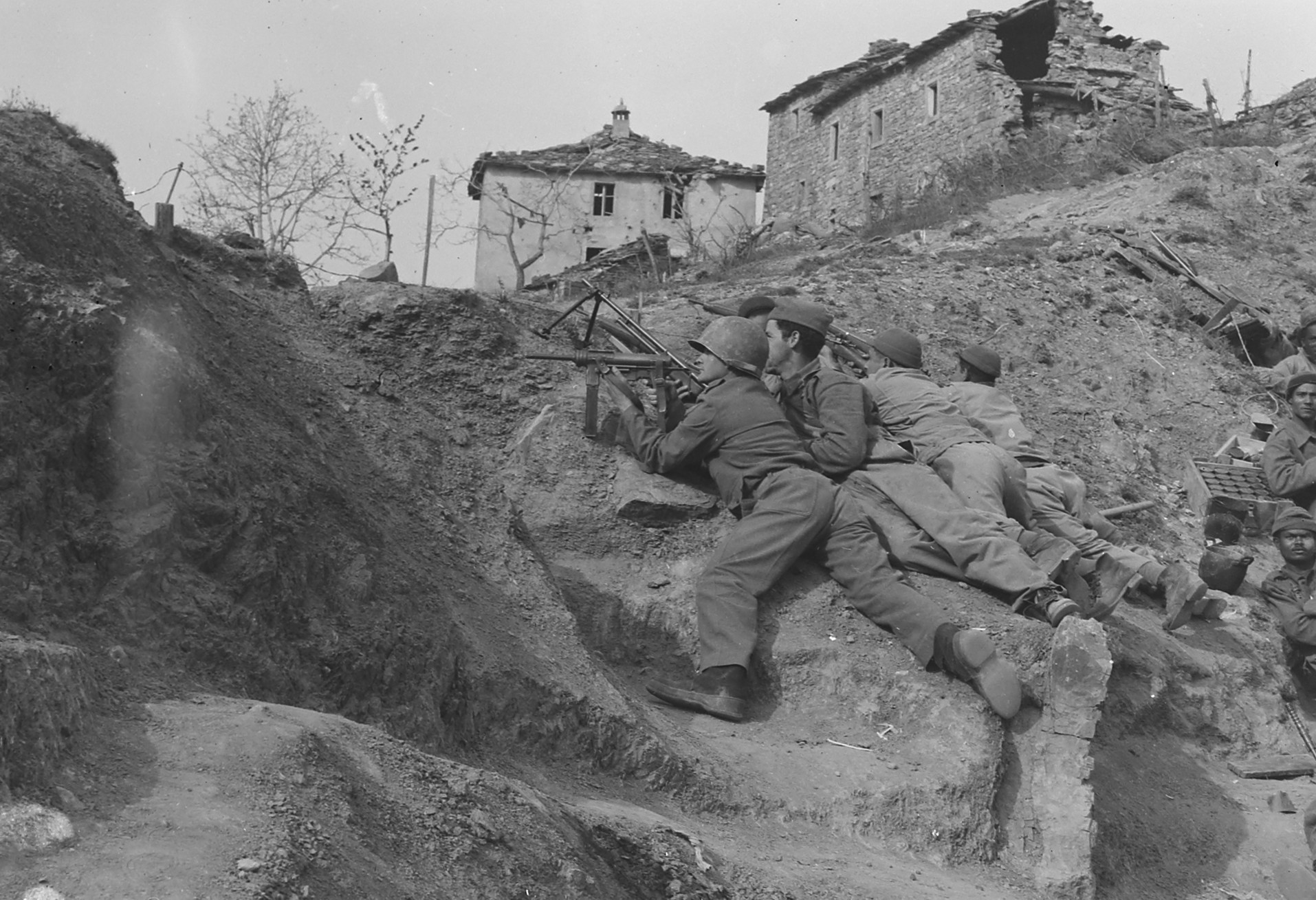
Conclusion
Certainly, their contributions and sacrifices during the campaign were major. For many months, Indian and Brazilian soldiers fought on their respective sides of the peninsula against a tenacious enemy. From the Middle East to northern Italy, Italians and Brazilians were integral participants in the war, and if their military contributions are largely ignored by the general public, their presence remains, nonetheless, major.
If you were interested in this short text, we invite you to consult the second part of this article, which deals with two other foreign corps whose contribution to Italy is just as undeniable: the Polish Armed Forces in the West and the French Expeditionary Corps in Italy.
Cover photo: A patrol of the 3rd Gurkha Rifles advances over snow-covered ground near Castel Bolognese, January 23 or 24, 1945 (source: Wiki Commons).
Article written by Julien Lehoux for Je Me Souviens.
Sources:
- “Italy 1943 – 1945: Indian Divisions“, British Military History.
- “The Brazilian Expeditionary Force in the Battle of Monte Castello“, gov.br.
- “The Italian Campaign after Salerno“, The Royal Hampshire Regiment.
- “The Masters of Monte Cassino“, Historical Eye.
- “War and Chapati: The Role of Indian Soldiers in Italy during WWII“, Global History Dialogues.
